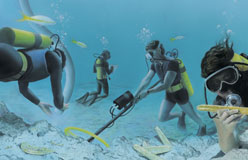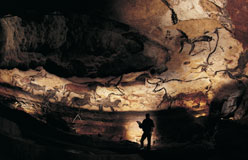On September 4, 1622, the mighty Spanish ship Nuestra Señora de Atocha sailed proudly out of Havana, Cuba. It was headed for Spain.
The sailors had great joy in their hearts, for they knew the king would be pleased with them. They were bringing valuable treasures back from Spain’s American colonies.
The Atocha was a galleon—a large, sturdy, heavily armed ship with several masts. It seemed unconquerable, but a fierce hurricane struck after only two days at sea. Driven against reefs along the Florida Keys, the ship was torn apart and quickly sank. Only 5 of the 265 people aboard survived, and a fortune in treasures was lost.
Centuries passed, and the Atocha remained in its watery grave. Then, in the 1970s, Mel Fisher and the scuba divers of his company, Treasure Salvors, began combing the seas for the treasures of the Atocha. The story of the recovery highlights one of the most hotly debated issues in treasure-hunting history: Who has the right to salvage treasures of the sea and claim them as their own?







